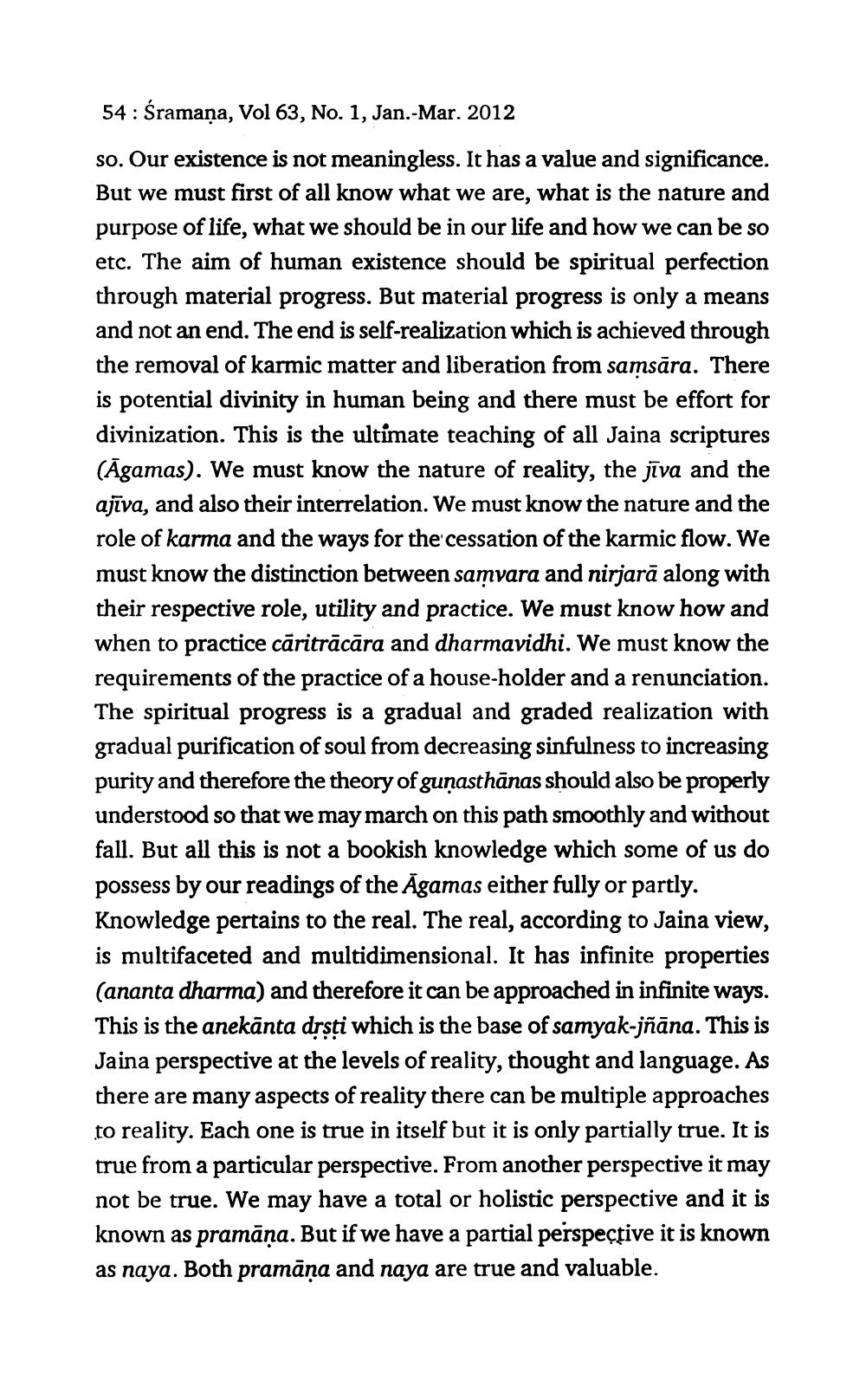________________
54: śramaņa, Vol 63, No. 1, Jan.-Mar. 2012 so. Our existence is not meaningless. It has a value and significance. But we must first of all know what we are, what is the nature and purpose of life, what we should be in our life and how we can be so etc. The aim of human existence should be spiritual perfection through material progress. But material progress is only a means and not an end. The end is self-realization which is achieved through the removal of karmic matter and liberation from samsāra. There is potential divinity in human being and there must be effort for divinization. This is the ultimate teaching of all Jaina scriptures (Āgamas). We must know the nature of reality, the jīva and the asīva, and also their interrelation. We must know the nature and the role of karma and the ways for the cessation of the karmic flow. We must know the distinction between samvara and nirjarā along with their respective role, utility and practice. We must know how and when to practice cāritrācāra and dharmavidhi. We must know the requirements of the practice of a house-holder and a renunciation. The spiritual progress is a gradual and graded realization with gradual purification of soul from decreasing sinfulness to increasing purity and therefore the theory of gunasthānas should also be properly understood so that we may march on this path smoothly and without fall. But all this is not a bookish knowledge which some of us do possess by our readings of the Āgamas either fully or partly. Knowledge pertains to the real. The real, according to Jaina view, is multifaceted and multidimensional. It has infinite properties (ananta dharma) and therefore it can be approached in infinite ways. This is the anekānta drsti which is the base of samyak-jñāna. This is Jaina perspective at the levels of reality, thought and language. As there are many aspects of reality there can be multiple approaches to reality. Each one is true in itself but it is only partially true. It is true from a particular perspective. From another perspective it may not be true. We may have a total or holistic perspective and it is known as pramāņa. But if we have a partial perspective it is known as naya. Both pramāṇa and naya are true and valuable.




